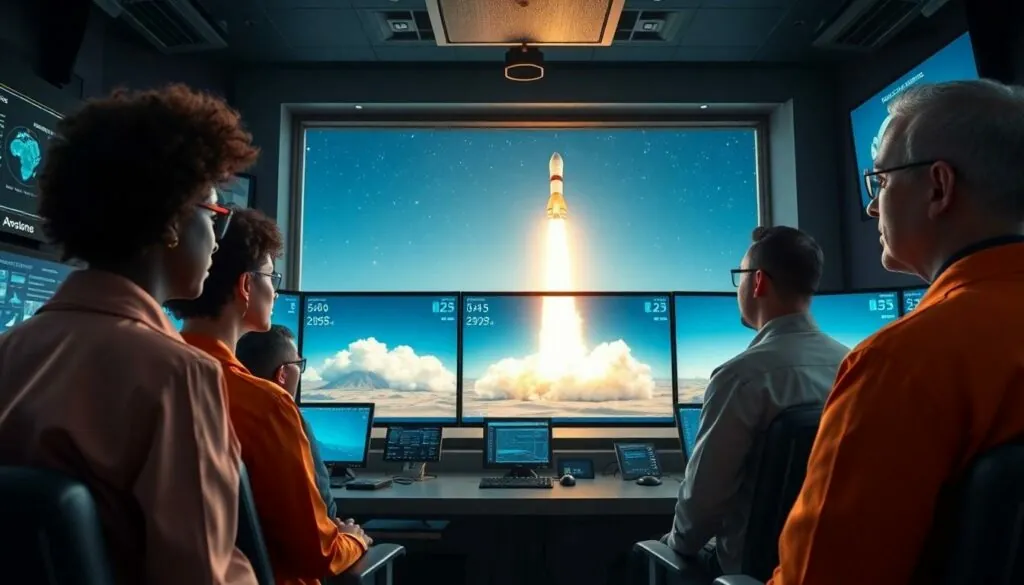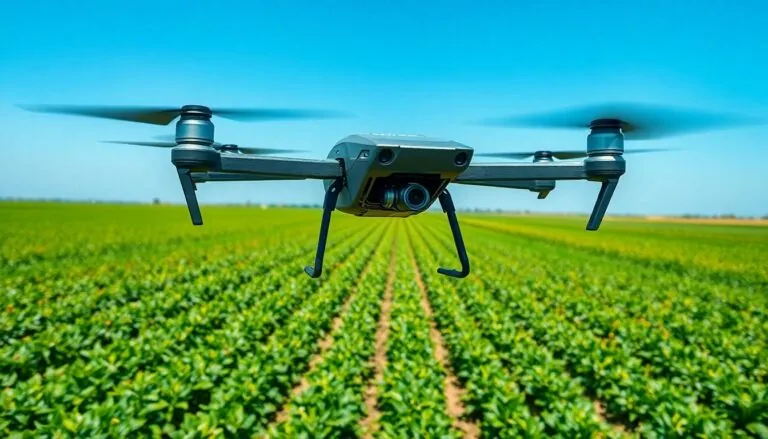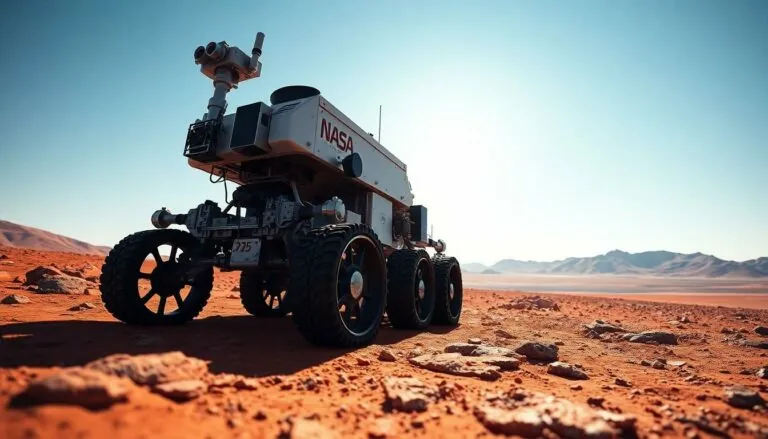Table of Contents
ToggleAs humanity hurtles toward 2025, the cosmos isn’t just a distant dream—it’s becoming a bustling playground for cutting-edge technology. With advancements that sound like they belong in a sci-fi blockbuster, space exploration is set to take a giant leap. From rocket launches that could rival a fireworks show to satellites that might just have their own Instagram accounts, the future of space tech is bright and full of surprises.
Imagine a world where astronauts zip around in sleek spacecraft, powered by innovations that make today’s tech look like a flip phone. As companies and governments invest billions, the race for the stars is heating up. Buckle up, because the next few years promise to be a thrilling ride through the final frontier, where every breakthrough could change our understanding of the universe and our place in it.
Overview of Space Technology Advancements 2025
Innovations in space technology continue to accelerate as 2025 approaches. Autonomous spacecraft will play a critical role in enabling sustainable exploration beyond Earth. Notably, artificial intelligence enhances navigation, allowing for efficient mission planning and execution.
Private companies are expected to launch reusable rockets, significantly reducing costs associated with space travel. SpaceX, for example, aims to provide more frequent missions to the International Space Station and beyond. Innovations in propulsion systems are on the horizon, promising faster travel times for interplanetary missions.
Satellite technology is also witnessing transformation, with small satellites capable of conducting advanced research. These satellites will facilitate real-time data collection for climate monitoring and disaster management. As a result, improved communication systems will emerge, enhancing connectivity for both terrestrial and extraterrestrial applications.
Partnerships between public and private sectors increase investment in space exploration. NASA’s Artemis program explores lunar landings and prepares to send humans to Mars by the end of the decade. Global collaboration ensures comprehensive coverage of space efforts, ensuring no region is left behind in exploring the cosmos.
Advancements in materials science improve the durability and efficiency of spacecraft. Lightweight composites and heat-resistant materials withstand harsh conditions in space. Increasing focus on sustainable practices promotes the use of in-situ resource utilization, reducing reliance on Earth-sourced materials.
These developments promise to make space more accessible for researchers and commercial enterprises alike. Enhanced technologies not only drive exploration but also foster innovation on Earth, solidifying humanity’s presence in the universe.
Key Innovations in Propulsion Systems

Space propulsion systems are undergoing significant innovations as the push for advanced space exploration intensifies. These advancements aim to enhance efficiency and sustainability.
Solid-State Rocket Technologies
Solid-state rocket technologies represent a game-changing shift in propulsion systems. Unlike traditional propellants, solid-state systems utilize materials that offer higher energy density and stability. This shift allows for safer and more reliable launches, ideal for both crewed and uncrewed missions. Several organizations, including the U.S. Department of Defense, are investing in these technologies for military and commercial applications. Benefits include the potential for rapid advancements and improvements in launch frequency. As a result, solid-state systems may redefine how space missions are initiated and conducted.
Ion Propulsion Development
Ion propulsion development has propelled space technology toward greater efficiency. This system uses electric fields to accelerate ions, providing thrust with much lower propellant mass than conventional systems. NASA’s Dawn spacecraft exemplifies successful long-range missions powered by ion propulsion. An increase in ion engines, including advancements in power efficiency and longevity, enhances mission capabilities significantly. Companies are exploring hybrid systems that integrate ion propulsion with traditional engines, offering flexibility for various mission profiles. Ultimately, these developments lead to extended mission durations beyond low Earth orbit, opening new frontiers in space exploration.
Enhanced Satellite Technologies
Advancements in satellite technology redefine capabilities in space exploration. Innovations focus on compact designs, improved communication, and efficient data transmission.
Miniaturization of Satellites
Miniaturization leads to smaller satellites that can carry out complex tasks. Recent developments allow microsatellites to perform functions typically reserved for larger counterparts, enabling cost-effective missions. For instance, CubeSats increasingly participate in Earth observation and telecommunications. Significant advancements in components and materials make these small satellites lighter and more powerful. They facilitate real-time environmental monitoring, enhancing disaster response efforts. Innovative launches for multiple small satellites on a single rocket improve deployment efficiency, meaning more assets in orbit for a fraction of the cost.
Advanced Communication Systems
Advanced communication systems enhance the connectivity of satellites. Technologies such as laser communication enable higher data transfer rates compared to traditional radio frequencies. Seamless communication between satellites in constellations supports a wide range of applications, from planet monitoring to global internet coverage. Furthermore, innovations in software-defined networking provide greater flexibility in satellite operations. These systems adapt to varying mission requirements, ensuring efficiency and reliability. Enhanced signal processing capabilities improve data integrity and accessibility, ensuring critical information reaches Earth swiftly.
Breakthroughs in Space Exploration
Innovations in space exploration are accelerating as advancements unfold rapidly. The following sections delve into specific initiatives shaping humanity’s future in the cosmos.
Mars Rover Missions
Mars rover missions are set to push boundaries by exploring the planet’s surface like never before. The Perseverance rover, which landed in February 2021, carries sophisticated scientific instruments for collecting data and sample caching. This mission is part of NASA’s broader goal to return sample materials to Earth for detailed analysis. Future missions will increase collaboration among international agencies, enhancing our understanding of Mars’ geology and potential for past life. Additionally, robotic platforms may pave the way for human exploration, establishing a sustainable human presence by the end of the decade.
Lunar Exploration Initiatives
Lunar exploration initiatives are gaining momentum with renewed interests in Earth’s natural satellite. NASA’s Artemis program aims to land the first woman and next man on the Moon by 2025. These missions will use advanced technologies to establish a sustainable presence on the lunar surface. Notably, the Lunar Gateway, a space station planned to orbit the Moon, will enable long-term research and support crewed missions. Collaborations with private companies will facilitate lunar landings and resource utilization strategies, allowing researchers to conduct experiments in a unique environment. These efforts are expected to expand humanity’s reach and further investigate the Moon’s potential as a stepping stone to Mars.
Impacts on Global Connectivity
Advancements in space technology promise to significantly enhance global connectivity. Innovations in satellite communications will address the digital divide, providing internet access to remote areas.
Internet Access in Remote Areas
New satellite constellations will deliver high-speed internet to underserved populations. Companies like SpaceX and Amazon are deploying thousands of satellites in low Earth orbit. These miniaturized satellites enable reliable connections in rural and hard-to-reach regions. Providing affordable internet access fosters economic development, educational opportunities, and social inclusion. Efforts to connect these areas could lead to improved emergency response capabilities and better healthcare access. Increased internet connectivity contributes to global communication networks, ensuring everyone benefits from digital advancements.
Real-Time Data Transmission
Real-time data transmission will revolutionize numerous sectors, including agriculture, transportation, and disaster response. Enhanced satellite networks will facilitate immediate data exchange for environmental monitoring and scientific research. Advanced communication technologies, such as laser communication systems, dramatically increase data transfer rates. Data collected from satellites helps track climate change, monitor natural disasters, and improve resource management. Organizations will utilize this information to make timely decisions and optimize operations. Faster data communication through space technology ultimately enhances decision-making and strengthens global collaboration.
Future Trends and Considerations
Advancements in space technology forecast significant developments as 2025 approaches. Autonomous spacecraft stand to revolutionize exploration beyond Earth, enhancing sustainable practices in outer space. With artificial intelligence streamlining navigation, mission planning becomes more efficient and reliable.
Private companies like SpaceX and others contribute to lowering space travel costs through reusable rocket technology. Furthermore, the growth of small satellites, including CubeSats, enables complex research tasks at reduced costs. These innovations facilitate real-time data collection critical for climate monitoring and disaster management.
Collaborative efforts between public and private sectors are increasing investments in ambitious projects, such as NASA’s Artemis program. Lunar landings and preparations for human missions to Mars underscore a shared commitment to exploration. Materials science advancements promise improvements in spacecraft durability and operational efficiency, making space more accessible.
Innovations in propulsion systems play a vital role in advancing space exploration. Solid-state rocket technologies deliver higher energy density, enhancing launch safety and reliability. Additionally, investments from entities like the U.S. Department of Defense target increased launch frequency and redefined mission initiation.
Development of ion propulsion systems is particularly noteworthy. Electric fields accelerate ions, fostering longer missions with reduced propellant mass. Hybrid systems integrating ion propulsion with traditional engines extend mission durations beyond low Earth orbit, broadening exploration horizons.
Communication capabilities also experience significant enhancement through advanced satellite technologies. Laser communication improves data transfer rates, enabling quicker connectivity among satellites. Software-defined networking boosts operational efficiency, ensuring critical information reaches Earth swiftly.
In parallel, Mars rover initiatives drive understanding of the planet’s geology and potential for past life. NASA’s Perseverance rover is set to collect samples for return, laying the groundwork for future international collaboration. Artemis aims to land humans on the Moon by 2025, building a sustainable lunar presence through advanced technologies and private partnerships.
Lastly, satellite communications address the digital divide by providing high-speed internet to remote areas. Companies like SpaceX and Amazon deploy new satellite constellations that improve global connectivity. Enhanced networks foster educational opportunities and improve emergency response capabilities, reflecting the profound impact of space technology on societal progress.
As advancements in space technology continue to unfold, humanity stands on the brink of a new era in exploration and innovation. The intersection of public and private efforts is creating unprecedented opportunities for research and connectivity. With each breakthrough, the cosmos becomes more accessible, paving the way for sustainable practices and international collaboration.
The upcoming missions to the Moon and Mars will not only expand our understanding of the universe but also foster a sense of unity among nations. As satellite technologies enhance global communication and environmental monitoring, the implications for life on Earth are profound. The future of space exploration is bright, and the potential for discovery is limitless.




